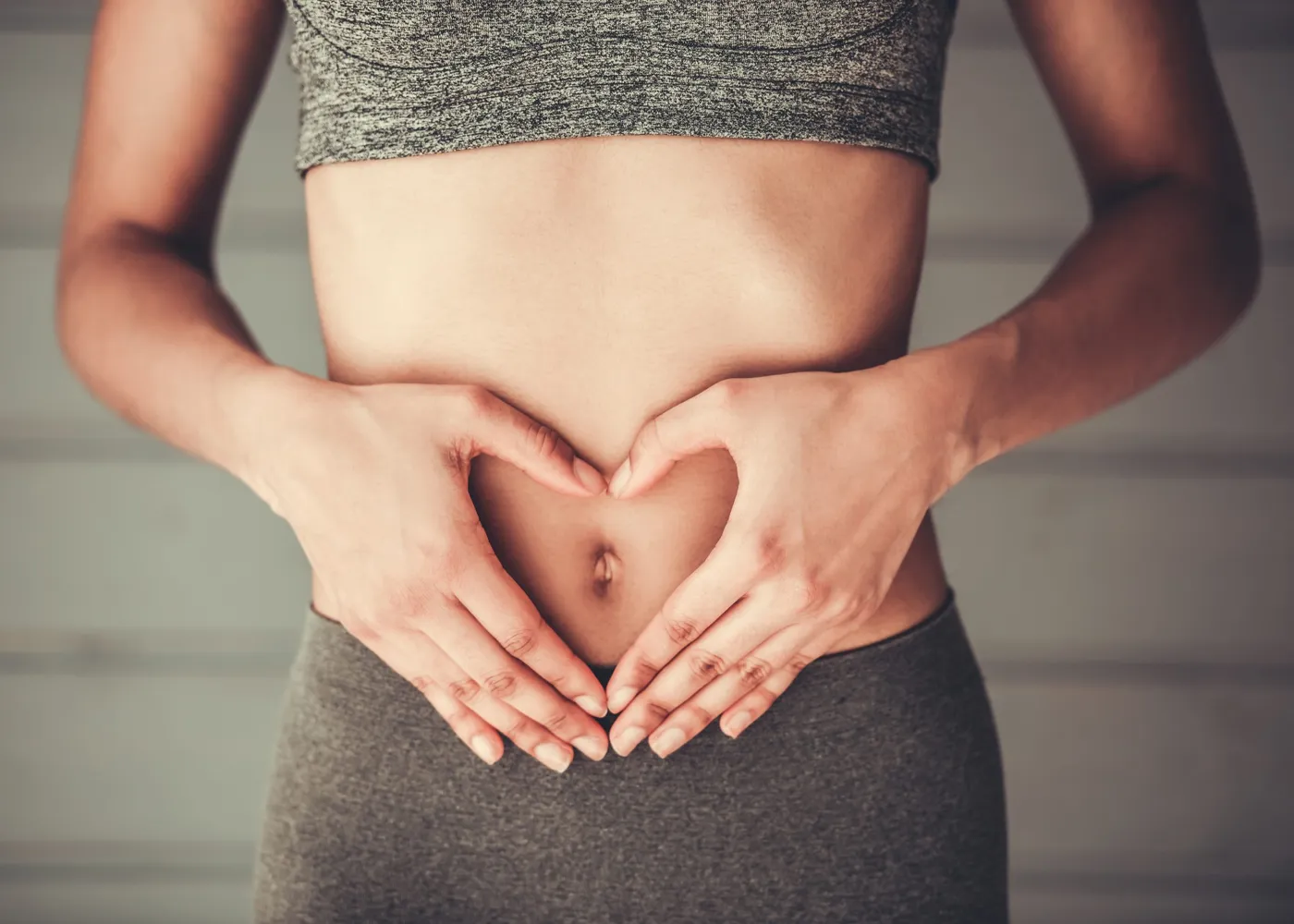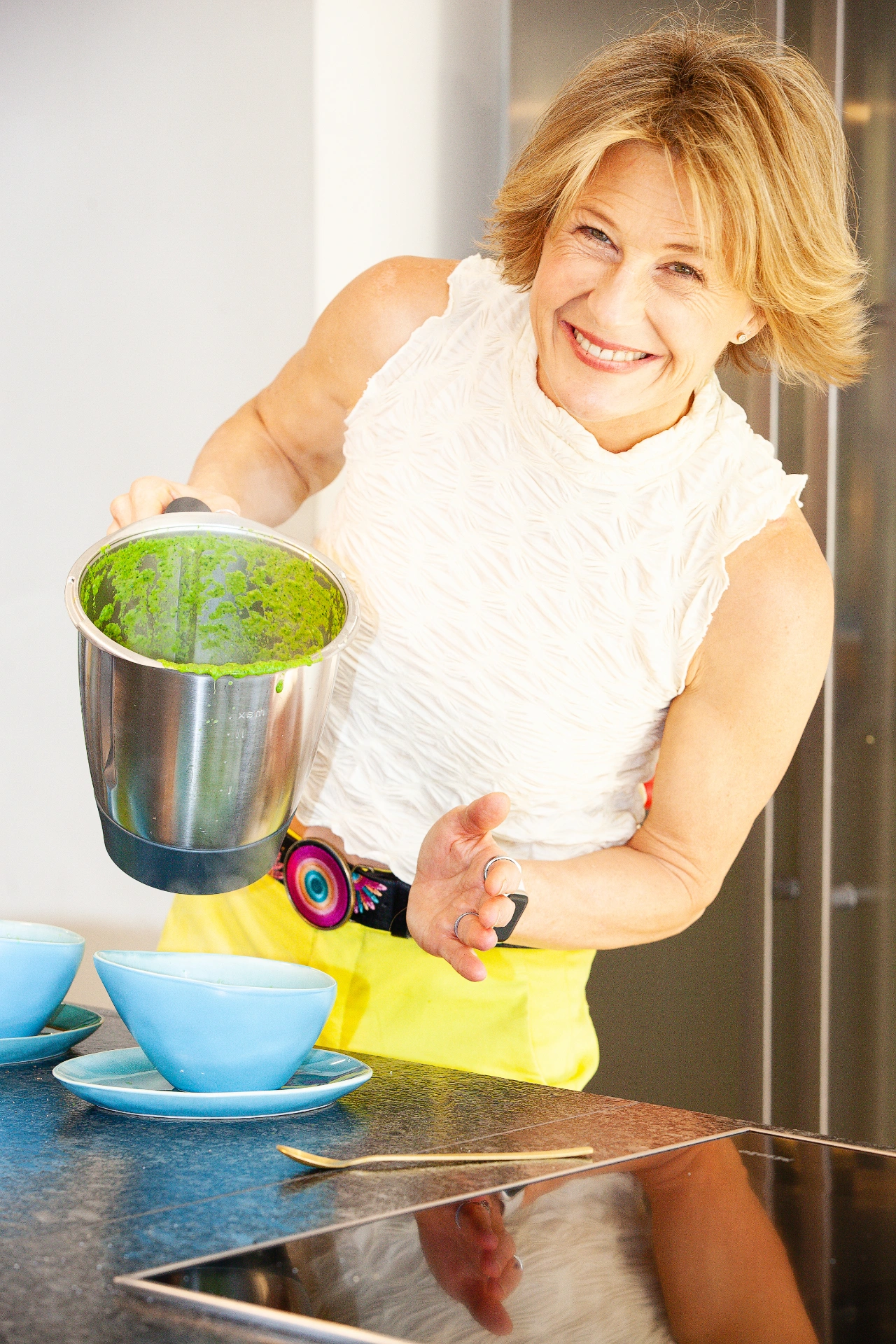
What is Candida?
Candida is a form of yeast that is found naturally in the mouth, vagina and intestines in most people. The key is that these yeasts are present in small amounts. When people talk about having ‘candida’ or ‘candidiasis’ infection, it is not so much that they are present in the gut, but that it has become out of balance with commensal or beneficial bacteria already present in the digestive tract.
The 5 most common strains associated with candidiasis are: Candida albicans (around 65% ), but other strains may also be problematic such as Candida glabrata (11.3%), Candida tropicalis (7.2%), C. parapsilosis (6.0%), and Candida krusei (2.4%)[1]. These strains are prevalent whether in the mucus membranes, the mouth or digestive tract. Geotrichtum candidum is another strain which can be present in the human gut.
Why can it overgrow in the gut?
A healthy gut with plenty of beneficial bacteria will normally keep the numbers of candida under control. But years of eating a standard Western diet with too much sugar and refined carbohydrate can encourage their growth, alongside any of the situations listed below.
Candida organisms are opportunistic pathogens and can take advantage when conditions become favourable to them and the way they feed and reproduce. The following conditions can support the growth or ‘bloom’ of candida and can potentially encourage an overgrowth in some, but not all people.
- a diet rich in carbohydrate and sugars (both natural and refined sugars)
- following a course of antibiotic therapy
- following a course of corticosteroid or steroid therapy
- having a high-stress lifestyle or one with a high alcohol intake
- being on long term antacid medications or PPI’s such as Omeprazole or Lanzoprazole
- taking the contraceptive pill or HRT
- living with uncontrolled diabetes
Why is Candida overgrowth a problem?
Yeasts can occur as rounded cells or in an elongated hyphal form. When yeasts overgrow or form the elongated cells, they can damage the endothelial lining of the gut wall.[2] Yeasts also release toxic by-products which can be absorbed in the gut and may enter the bloodstream.
While there are reports of candida manufacturing up to 79 toxins; acetaldehyde and candidalysin[3] are probably the most researched. These may be responsible for many different health problems and digestive issues. This is because they have been implicated in intestinal permeability or ‘leaky gut’ where the gut epithelium becomes damaged and no longer forms a complete barrier between the inside of the gut and the neighbouring bloodstream.
Candida can also create their own biofilms, which give themselves additional protection, but can make them even harder to treat with both medical intervention and natural fungicides. There are, luckily, a range of natural substances that act as biofilm disrupters which weaken the organism and may break down these biofilms. Oregano oil, garlic, caprylic acid and N-acetyl-cysteine are examples of these substances. [4] [5]
Symptoms of Candida
Symptoms can be diverse as candida can colonise different body surfaces, however it is the toxic by-products which they produce that are thought to be responsible for many of the symptoms. Symptoms include:
- Digestive Issues – mostly bloating, gas, diarrhoea, cramps, nausea
- Chronic fatigue – Candida’s produce a wide variety of chemicals, such as acetaldehyde[6]
- Brain Fog5
- Recurring yeast infections such as thrush, or oral thrush
- Urinary tract infections (UTI’S)[7]
- Sinus infections[8]
- Food intolerances[9]
- Joint pain
- Low Mood, irritability, depression or anxiety
- Cravings for sugar and refined carbohydrates
This article can be downloaded as a printable document plus if you would like to receive the COMPLETE ANTI-CANDIDA FOOD LIST showing what to eat and what to avoid on an anti-candida diet alongside a coupLe of my recipes please click below
Candida Testing
Sometimes the candida infection is not the singular root cause of ill health, therefore testing can offer a more complete picture of your health. Candida often co-exists with what is known as dysbiosis, where the gut bacteria have become out of balance. It is therefore always advisable to have candida diagnosed with a functional test as other conditions may mimic candidiasis; such as a parasite infection, SIBO (small intestinal bacteria overgrowth) or dysbiosis. Other related conditions with similar symptoms could be Lyme’s disease or even a mould toxicity.
As changing our diet can have a profound effect on our health, it is always better to understand what exactly we are trying to ‘treat’. The anti-candida diet is simply a low sugar, low yeast / mould and low carbohydrate diet, but it is restrictive. Also, if supplements are being used, their impact should be fully understood on the rest of the digestive tract. Testing could be via an organic acids urine test, which tests for compounds in the urine and can pick up metabolic by-products of yeasts (alongside a full functional nutritional assessment), or perhaps a stool test, which can identify exact species of bacteria, yeasts and parasites in the gut. A nutritional therapist can help to organise testing, if deemed appropriate.
The anti-candida diet
It is best to find the middle ground when treating candida. We do not want to annihilate all candida in the gut, but we are seeking to re-dress the balance. A diet that is too strict may not be advisable as it could potentially damage the beneficial bacteria levels that form a healthy microbiome and are necessary for health. The microbiome is the name for the ecosystem of bacteria living in our digestive tract.
Candida can feed on free sugars, which is why it is advisable to eliminate all sugars if you have a candida overgrowth, however ultimately we need to take care with refined carbohydrates too. Grains and cereals, such as wheat, rice, corn, oats, barley etc. are all carbohydrates that consist of long chains of glucose molecules, connected together, like beads on a necklace.
The faster we digest these chains, the quicker we can release the sugars they contain. The more processed the grain (e.g. white flour, white bread, white rice or breakfast cereals) the faster these glucose molecules will be released into the gut. It is therefore advisable to choose foods that release their glucose slowly and to reduce fast acting glucose sources. For an anti-candida diet, carbohydrates should only be eaten as wholegrains or root vegetables and not at every meal.
The paradox is that some people can feel worse when they switch to an anti-candida diet, due to it being very restrictive. From my perspective in clinic, the most successful approach is a sugar-free, moderate carbohydrate anti-candida diet alongside the following rebalancing techniques (below).
Note on Die Off- Herxheimer
A die-off reaction is also known as a Herxheimer reaction. This can occur on a restricted diet with anti-fungals as the candida is literally being starved of food and begins to die. When organisms die, they release their cell contents, some of which may be toxic and could enter the blood stream. If this occurs, people may experience fatigue or even flu-like or ‘hangover’ style symptoms. If this occurs the programme should be slowed down to decelerate this effect.
Rebalancing
A very important part of an anti-candida diet is the rebalancing part, which is also the part many people forget! This is where we repair the gut wall, repopulate the gut using specific prebiotics and probiotics and re-introduce fermented foods as well as prebiotic foods that nourish and feed the gut bacteria. Please talk to qualified health care professional before starting a course of supplements to check they are right for you.
FOODS TO REMOVE
- Remove foods that may be encouraging a candida overgrowth. Following the anti-candida diet for a set period of time will help with this.
- Consider nutritional supplements that are both antifungals and biofilm disrupters: Examples here could include garlic, caprylic acid, oregano oil, Pau D’arco or berberine. It is best to do this under the supervision of a nutritional therapist who will be able to find the correct balance of supplements for you. More is not necessarily better!
- Eat plenty of cruciferous or bitter vegetables to support liver function during die-off. Broccoli, cauliflower, Brussel sprouts, rocket, kale, cabbage as well as some alliums such as leeks, onions and garlic.
-
REPAIR
Repair the gut wall. Certain supplements such as glutamine or colostrum can benefit here, but again please speak to a professional who would be able to advise if you need these and appropriate dosages.
REPLACE
Rebalance the gut microbiome with the correct prebiotics and probiotics.
- Prebiotic supplements include: inulin, FOS (Fructo-oligo-saccharides), GOS (galactooligosaccharides), XOS (xylo-oligosaccharides) or PHGG (partially hydrolysed guar gum). These act as a food source to the beneficial bacteria living in the gut and may encourage a healthy diversity of gut bacteria.
- Probiotics can be helpful such as Bacillus spore or soil based bacteria (sometimes are sold under Megasporebiotic). These can be particularly beneficial as research has shown that they can be helpful against leaky gut[10]. The correct strains of Lactobacillus and Bifidum bacteria may also offer benefits.
REBALANCE
This means also changing our lifestyle and addressing things in our life that have possibly encouraged the overgrowth in the first place.
- Manage stress
- Continue to eat a healthy natural diet (such as a Mediterranean diet) that is low in sugar and rich in vegetables, lean proteins, wholegrain or complex carbohydrates and healthy fats. Continue to avoid refined sugars and grains, breakfast cereals and processed foods wherever possible.
- Include fermented foods into your diet. Choose from raw (not pasteurised) sauerkraut, kimchi, pickles, olives, tempeh (fermented soya beans), kefir or live yogurt. Raw unfiltered apple cider vinegar also counts.
- Eat at least 2 prebiotic foods daily. Prebiotics provide a substrate or food for the healthy gut bacteria and help to maintain numbers in the gut. These include:
- Chicory
- Artichoke
- Garlic
- Leeks
- Onion
- Oats
- Bananas (unripe)
- Rye (if not gluten allergic)
- Asparagus
- Avocado
- Soya bean
- Peas
- Apple cider vinegar
- Dark chocolate (70%+)
- Leafy green vegetables
- Chia seeds
- Flax seed
Foods to be eaten freely during the candida diet
| Meat | Choose grass-fed or organic if possible Beef, pork, lamb, wild meats |
| Poultry | Choose free range or organic where possible Chicken, turkey, duck, pheasant, grouse, etc. |
| Fish | Choose wild and not farmed if possible All white fish: hake, cod, haddock, plaice, sole, sea bream, sea bass, turbot Oily fish: salmon, mackerel, sardines, anchovies, herring, tuna etc. |
| Shellfish and Molluscs | Prawns, tiger prawns, scallops, squid, mussels, crab, crayfish |
| Other proteins | Full fat Greek yogurt, soft fresh cheeses, preferably sheep and goat Eggs |
| Vegetarian Protein Sources | Nuts and seeds, Tofu, Edamame beans and occasional beans and lentils |
| Vegetables | All non-starchy vegetables. If your digestion is sensitive, please cook your vegetables initially and avoid raw salads |
| Starchy carbohydrates | Try to eat with just one meal a day if symptoms are severe: choose from oat cakes, porridge oats, rye sourdough or pumpernickel (sugar-free), quinoa or sweet potato |
| Fruit | Choose low glucose fruits, see list |
| Nuts and seeds | All may be consumed. Soaking nuts may make them more digestible prior to eating |
| Oils / Fats | Extra virgin olive oil, coconut oil, flax or hemp seed oils, organic butter, ghee, avocado oil |
| Vinegar | Apple cider vinegar |
| Beneficial Others | Turmeric, garlic, cloves, ginger, cinnamon, lemon juice, lemon juice, coconut |
| Drinks | Water 2-3 litres daily |
Footnotes _____________________________________
[1] Turner, S. and Butler, G., 2014. The Candida Pathogenic Species Complex. Cold Spring Harbor Perspectives in Medicine, 4(9), pp.a019778-a019778.
[2] Basmaciyan, L., Bon, F., Paradis, T., Lapaquette, P. and Dalle, F., 2019. “Candida Albicans Interactions With The Host: Crossing The Intestinal Epithelial Barrier”. Tissue Barriers, 7(2), p.1612661.
[3] Nehls, C., Wernecke, J., Paulowski, L., Lewke, M., Fabritz, H., Naglik, J., Hube, B. and Gutsmann, T., 2018. Membrane Activity of the Fungal Peptide Toxin Candidalysin. Biophysical Journal, 114(3), p.264a.
[4] www.thecandidadiet.com/candida-biofilms/
[5] Cavalheiro, M. and Teixeira, M., 2018. Candida Biofilms: Threats, Challenges, and Promising Strategies. Frontiers in Medicine, 5.
[6] Basmaciyan, L., Bon, F., Paradis, T., Lapaquette, P. and Dalle, F., 2019. “Candida Albicans Interactions With The Host: Crossing The Intestinal Epithelial Barrier”. Tissue Barriers, 7(2), p.1612661.
[7] Achkar, J. and Fries, B., 2010. Candida Infections of the Genitourinary Tract. Clinical Microbiology Reviews, 23(2), pp.253-273.
[8] Naylor, S., 2000. Role of Fungi in Allergic Fungal Sinusitis and Chronic Rhinosinusitis hinosinnsitis. Mayo Clinic Proceedings, 75(5), p.540.
[9] Yamaguchi, N., 2006. Gastrointestinal Candida colonisation promotes sensitisation against food antigens by affecting the mucosal barrier in mice. Gut, 55(7), pp.954-960.
[10] McFarlin, B., Henning, A., Bowman, E., Gary, M. and Carbajal, K., 2017. Oral spore-based probiotic supplementation was associated with reduced incidence of post-prandial dietary endotoxin, triglycerides, and disease risk biomarkers. World Journal of Gastrointestinal Pathophysiology, 8(3), p.117.
About Dominique Ludwig, Nutritionist MSc and Nutritional Therapist mBANT
Dominique Ludwig is an accomplished Nutritionist with over 30 years’ experience as a qualified nutritionist and 16 years as a nutritional therapist. The secret weapon of many high-profile clients and A-list celebrities, Dominique has been voted one of the top 15 nutritionists in the UK.
She is the founder of the Nutrition and Lifestyle Programme Renew Reset Recharge®. This is a pioneering nutrition, weight management and lifestyle programme all rolled into one. Working out of her busy practice and The Meyer Clinic, Dominique has helped over a thousand clients, globally, live healthier lives. She is a regular contributor to The Times, The Sunday Times and Times 2.
To work with Dominique, either contact her via Dominique Ludwig website or book a free discovery call.
Dominique can work on a 1:1 basis with you for personalised nutrition. This might include stool testing to identify if candida is causing your health problems as well as a personalised plan to support you with the correct supplements. You may also be interested in the low sugar nutrition, weight loss and lifestyle programme Renew Reset Recharge.
DISCLAIMER
Features published by Dominique Ludwig are not intended to treat, diagnose, cure or prevent any disease. Always seek the advice of your GP or another qualified healthcare provider for any questions you have regarding a medical condition, and before undertaking any diet, exercise or other health-related programme.





